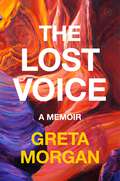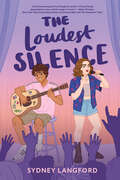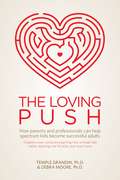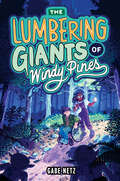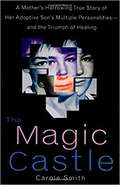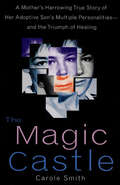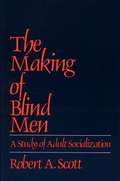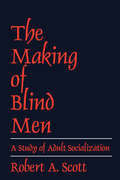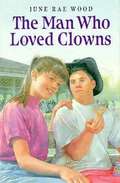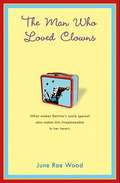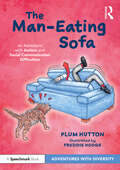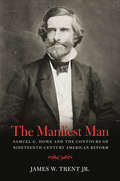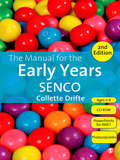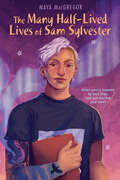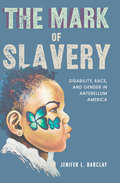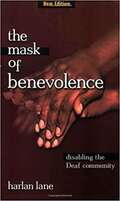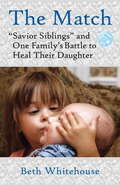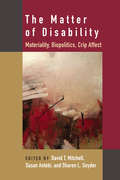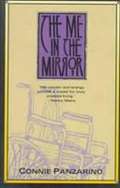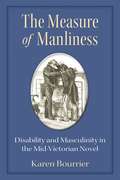- Table View
- List View
The Lost Voice: A Memoir
by Greta MorganA poignant, tenacious memoir by musician Greta Morgan chronicling how she rediscovered her artistic voice after losing her ability to sing.In 2019, Greta Morgan was on the rise. She was a touring member of Vampire Weekend, performed with Jenny Lewis, and garnered critical acclaim with her own musical projects. But in March 2020, after contracting Covid-19, she was diagnosed with spasmodic dysphonia, a neurological disorder with no known cure that left her unable to sing. Her once crystalline voice now reduced to a hush, she saw her career come to an abrupt standstill.Beyond the physical ramifications, what does it mean to cultivate a true voice? Morgan’s loss launches her into a journey of grief and self-discovery, forcing her to broaden her artistic horizons and reconstruct her sense of self. Her narrative takes us on a whirlwind tour of music studios, band buses, and celebrity-filled backstage parties, but it also takes us to the red canyons of Utah and the spacious wilderness of the American Southwest. In these vast landscapes, Morgan finds unexpected community. In the silence, she learns how to listen to parts of herself she has neglected.Questioning the purpose of creativity and what defines artistic passion, The Lost Voice is a raw and intimate portrait of grief, self-discovery, and the choice to keep living and creating.
The Loudest Silence
by Sydney LangfordTwo disabled queer teens find belonging in this poignant platonic love story about singing, signing, and solidarity.Casey Kowalski once dreamed of becoming a professional singer. Then the universe threw her a life-altering curveball—sudden, permanent, and profound hearing loss—just before her family&’s move from Portland to Miami. Now, she&’s learning to navigate the world as a Deaf-Hard of Hearing person while trying to conceal her hearing loss from her new schoolmates. Hayden González-Rossi is also keeping secrets. Three generations of González men have risen to stardom on the soccer field, and Hayden knows his family expects him to follow in their footsteps, but he wants to quit soccer and pursue a career on Broadway. If only his Generalized Anxiety Disorder didn&’t send him into a debilitating spiral over the thought of telling the truth.Casey and Hayden are both determined to hide who they really are. But when they cross paths at school, they bond over their shared love of music and their mutual feeling that they don&’t belong, and the secrets come spilling out. Their friendship is the beating heart of this dual-perspective story featuring thoughtful disability representation, nuanced queer identities, and a lovably quirky supporting cast.
The Loving Push: How Parents and Professionals Can Help Spectrum Kids Become Successful Adults
by Temple Grandin Debra MooreThe purpose of this book is to help parents let go and give careful, loving pushes to get their child to try new things. Temple Grandin, Debra Moore spell out which steps you can take to restore your child’s hope and motivation--and what you must avoid.
The Luckiest Girl in the World
by Steven LevenkronKatie is a promising figure skater whose divorced mother drives her relentlessly to perfect her skills, at almost any expense. What her mother and coach don't know, but her English teacher begins to figure out, is that when Katie gets to an emotional edge, she hides and cuts herself; the pain and blood help focus her mind. Not until she goes over that edge one day at school and begins slamming her locker door on her hand and then banging her head on the wall does she begin to get the professional help she needs. After a couple of false starts, she finds a psychiatrist experienced in working with teens in trouble who enables her to tell truths she hasn't for years been able to admit to herself or speak of to anyone else. Her mother resists other adults' help and almost succeeds in getting her out of therapy, especially group therapy with girls her mother labels "delinquents." But Katie finally manages to make some choices against her mother's wishes--an immense step out of the depths of years of co-dependence. As the story ends, she has come to realize the girls in the group are capable of being real friends--something she hasn't had for a long while--and she is capable of making choices toward her own healing, the first of which is to seek and accept real help and to distinguish it from pleasing adults who are using her to assuage their own pain.
The Lumbering Giants of Windy Pines
by Mo NetzIn this debut spooky adventure, Jerry and her trusty wheelchair move into a creepy motel at the edge of the woods where nothing is as it seems. When her mom disappears, it’s up to Jerry to brave the forest and its demons so she can save what’s left of her family.Ever since her dad died, 11-year-old Jerry Blum and her mom have bounced around dead-end towns, staying in a series of rundown motels where her mother picks up housekeeping work and Jerry can get around in her wheelchair. But the Slumbering Giant motel is different. Lights blink on and off in the surrounding trees, a mysterious radio station plays only at midnight, and people disappear into the woods, never to been seen again. Not to mention that Jerry’s mom keeps vanishing to do “special work” that she refuses to discuss. When her mother doesn’t come home one morning, Jerry springs into action.Luckily, she’s not alone. Paul, a pocket-size imaginary dragon, and Chapel, a new friend with a penchant for the supernatural, join Jerry’s search for her missing mom. But along the way Jerry discovers her mother’s terrible secret: she’s not a housekeeper at all; in fact, she’s been defending the town from demons that have been haunting it for generations.Armed with nothing but a Ren Faire sword and a backpack, Jerry and her friends venture into the forbidden woods to save Jerry’s mother. But the “demons” hiding there aren’t what they seem, and Jerry must unravel the truth behind the town’s legend, or risk losing what’s left of her family.
The Madness of Ushers: Coping with Vision and Hearing Loss (Usher Syndrome Type II)
by Dorothy H. StiefelThe author allows the reader to enter her personal "twilight zone," an inconsistent world of grayness brought on by the dual disability of hearing and sight loss. She uses specific events in her life to show the reader with these disabilities that they are not alone in fighting despair and confusion. Statements from others who have faced Usher syndrome and retinitis pigmentosa lend credence to the author's message: "giving up is not an answer." Recommended reading for family members and friends, professionals in the field, and persons with retinitis pigmentosa and Usher syndrome. -Linda Lindell, Information and Referral Coordinator Texas State Library Program for the Blind and Physically Handicapped
The Magic Castle: A Mother's Harrowing True Story of Her Adoptive Son's Multiple Personalities and the Triumph of Healing
by Carole Smith"This is a true account of my experiences in successfully raising a child who suffered from multiple personality disorder. In writing the book, I have made extensive use of notes I took during therapy sessions and directly after encounters with alters, mental health personnel, a child placement organization, and the office of the district attorney. Occasionally, I have combined several similar events to avoid repetition. I was not present at the original incidents but I did observe many revivifications of the actual events. My belief in the truth of the personalities' revelations is based upon physical and circumstantial evidence and also occasional verification from witnesses. All of my encounters with the alters, including revivifications, have been accurately depicted and have not been exaggerated in any way. Many names, locations, and identifying details, including those of my family, have been changed or modified. The only names used in this book that have not been altered are those of Bill Conti, Dr. Steven J. Kingsbury, Dr. Nina Fish-Murray, Marie Párente, and Dr. Van der Kolk. The names of places and institutions that have not been changed are Boston Children's Hospital; Camp Wedicko; County District Attorneys Office; Massachusetts Department of Social Services; Massachusetts Mental Health Center; Mount Auburn Hospital; Northboro, Massachusetts; Robert F. Kennedy Residential School; and University of Massachusetts Acute Adolescent Psychiatric Unit at Westboro. As a final note, when he was thirteen years old, my son wanted to sever all connections to the perpetrators and asked to have his first, middle, and last names changed. I gave him an old family name of mine, my husband's middle name, and, of course, our last name. It is important that the reader know of these changes. However, throughout this book I have simply called him Alex."
The Magic Castle: A Mother's Harrowing True Story of Her Adoptive Son's Multiple Personalities—and the Triumph of Healing
by Carole SmithAlex Smith and his eight personalities were trapped in a world of unfathomable evil...until he entered the "magic castle" and found the key to his freedom.When Carole Smith and her husband decided to take in a foster child that no one else would have, they knew ten-year-old Alex would be difficult. But nothing had prepared them for the unruly, self-destructive boy who stormed into their lives. Alone with Alex during the day, Carole was baffled by his infantile tantrums and violent, self-hating behaviors. Exasperated, she tried relating to him as the two-year-old he appeared to be, and finally, a door to Alex's mind began to open.With the help of psychiatrist Dr. Steven Kingsbury, Alex's tormented mind revealed a host of personalities, each born in a horrifying episode of Alex's past-- each carrying a memory too powerful for his conscious mind to handle. As the personalities came forth in the safety of Alex's inner, secret castle, they unleashed stories of abandonment, brainwashing, and sexual abuse by those Alex trusted the most. In The Magic Castle, here is a fascinating true story of the human mind; of innocence shattered by inhuman cruelty; and ultimately of love's power to transform fragments into wholeness-- tragedy into triumph.
The Making Of Blind Men
by Robert A. Scott<P>The disability of blindness is a learned social role. The various attitudes and patterns of behavior that characterize people who are blind are not inherent in their condition but, rather, are acquired through ordinary processes of social learning. The Making of Blind Men is intended as a systematic and integrated overview of the blindness problem in America. <P> Dr. Scott chronicles which aspects of this problem are being dealt with by organizations for the blind and the effectiveness of this intervention system. He details the potential consequences of blind people becoming clients of blindness agencies by pointing out that many of the attitudes, behavior patterns, and qualities of character that have been assumed to be given to blind people by their condition are, in fact, products of socialization. As the self-concepts of blind men are generated by the same processes of socialization that shape us all, <P>Dr. Scott puts forth the challenge of reforming the organized intervention system by critically evaluating the validity of blindness workers' assumptions about blindness and the blind. It is felt that an enlightened work force can then render the socialization process of the blind into a rational and deliberate force for positive change.
The Making of Blind Men
by Robert A. ScottThe disability of blindness is a learned social role. The various attitudes and patterns of behavior that characterize people who are blind are not inherent in their condition but, rather, are acquired through ordinary processes of social learning. The Making of Blind Men is intended as a systematic and integrated overview of the blindness problem in America. Dr. Scott chronicles which aspects of this problem are being dealt with by organizations for the blind and the effectiveness of this intervention system. He details the potential consequences of blind people becoming clients of blindness agencies by pointing out that many of the attitudes, behavior patterns, and qualities of character that have been assumed to be given to blind people by their condition are, in fact, products of socialization. As the self-concepts of blind men are generated by the same processes of socialization that shape us all, Dr. Scott puts forth the challenge of reforming the organized intervention system by critically evaluating the validity of blindness workers' assumptions about blindness and the blind. It is felt that an enlightened work force can then render the socialization process of the blind into a rational and deliberate force for positive change.
The Man Who Loved Clowns
by June Rae WoodThirteen-year-old Delrita, whose unhappy life has caused her to hide from the world, loves her uncle Punky but sometimes feels ashamed of his behavior because he has Down's syndrome.
The Man Who Loved Clowns
by June Rae WoodDelrita likes being invisible. If no one notices her, then no one willnotice her uncle Punky either. Punky is a grown man with a child's mind. Delrita loves him dearly and can't stand people making fun of his Down's syndrome. But when tragedy strikes, Delrita's quiet life—and Punky's—are disrupted forever. Can she finally learn to trust others, for her own sake and Punky's? This story captures the joy and sorrow that come when we open our hearts to love. .
The Man Who Loved Clowns
by June Rae WoodDelrita likes being invisible. If no one notices her, then no one willnotice her uncle Punky either. Punky is a grown man with a child's mind. Delrita loves him dearly and can't stand people making fun of his Down's syndrome. But when tragedy strikes, Delrita's quiet life--and Punky's--are disrupted forever. Can she finally learn to trust others, for her own sake and Punky's? This story captures the joy and sorrow that come when we open our hearts to love.
The Man-Eating Sofa: An Adventure with Autism and Social Communication Difficulties (Adventures with Diversity)
by Plum HuttonPeople often say that ‘school is the best time of your life’, but for Lara, school is loud and confusing. She much prefers watching James Bond films or building furniture in her dad’s workshop. When the teachers at Lara’s new school realise that she is autistic, they are able to help with strategies to make school more tolerable for her. All except Mr Prender-ghastly. The headmaster has been looking for a way to gently direct Mr Prendergast towards a change of career, but it is Lara, and her special man-eating sofa, who finally help rid the school of the fearsome teacher. This entertaining story, suitable for readers aged 8-12, explores some of the challenges faced by autistic pupils and those with social communication and interaction difficulties in mainstream schools. It highlights the stress and anxiety that young people with sensory processing and social interaction difficulties may feel in the noisy and unpredictable school environment, and identifies some strategies that can be used to support them. Also available as a set with a supporting guide, this book operates as a fun and engaging standalone story, both for children who are autistic themselves and those who are not. It is a must-have book for every classroom.
The Manliest Man: Samuel G. Howe and the Contours of Nineteenth-Century American Reform
by James W. TrentA native of Boston and a physician by training, Samuel G. Howe (1801-1876) led a remarkable life. He was a veteran of the Greek War of Independence, a fervent abolitionist, and the founder of both the Perkins School for the Blind and the Massachusetts School for Idiotic and Feeble-Minded Children. Married to Julia Ward Howe, author of "Battle Hymn of the Republic," he counted among his friends Senator Charles Sumner, public school advocate Horace Mann, and poet Henry Wadsworth Longfellow. Always quick to refer to himself as a liberal, Howe embodied the American Renaissance's faith in the perfectibility of human beings, and he spoke out in favor of progressive services for disabled Americans. A Romantic figure even in his own day, he embraced a notion of manliness that included heroism under fire but also compassion for the underdog and the oppressed. Though hardly a man without flaws and failures, he nevertheless represented the optimism that characterized much of antebellum American reform. The first full-length biography of Samuel G. Howe in more than fifty years, The Manliest Man explores his life through private letters and personal and public documents. It offers an original view of the reformer's personal life, his association with social causes of his time, and his efforts to shape those causes in ways that allowed for the greater inclusion of devalued people in the mainstream of American life.
The Manual for the Early Years SENCO
by Collette DrifteWritten with both new and experienced practitioners in mind and packed with practical advice, suggestions, case studies and useful photocopiable materials, this new edition of a much-loved book will help all SENCOs (Special Educational Needs Co-ordinators) succeed in what is often a very demanding role. Providing plenty of help with planning and time-management, this book contains everything you need to know about your role, information on the current government policies such as Every Child Matters (ECM) and the Early Years Foundation Stage (EYFS) and meeting the Early Years Professional Status (EYPS) standards for supporting children with additional needs. New to this second edition are: - a CD-ROM containing photocopiable materials - PowerPoint presentations for delivery of in-service training - advice on inter-agency working and inter-professional practice - more guidance on working in partnership with parents - guidance on implementing the Early Years Foundation Stage (EYFS) for all children - case studies including several in the Birth to 3 age range A must-have for new and busy SENCOs working in reception classes, nursery schools, playgroups or any other early years setting working with the Birth to 7 age range, this book is also useful for those studying for a Foundation Degree in Early Childhood Care and Education and for those working towards Early Years Professional Status (EYPS).
The Many Half-Lived Lives of Sam Sylvester
by Maya MacGregor&“Look no further for your next favorite read, because The Many Half-Lived Lives of Sam Sylvester has it all: a gripping murder mystery that will keep you turning pages, ghosts, romance, and a treasure trove of queer characters with depth and heart. Here&’s something rare—a suspenseful story that also feels like a hug.&” —Sarah Glenn Marsh, author of the Reign of the Fallen seriesIn this queer contemporary YA mystery, a nonbinary autistic teen realizes they must not only solve a 30-year-old mystery but also face the demons lurking in their past in order to live a satisfying life. Sam Sylvester has long collected stories of half-lived lives—of kids who died before they turned nineteen. Sam was almost one of those kids. Now, as Sam&’s own nineteenth birthday approaches, their recent near-death experience haunts them. They&’re certain they don&’t have much time left. . . .But Sam's life seems to be on the upswing after meeting several new friends and a potential love interest in Shep, their next-door neighbor. Yet the past keeps roaring back—in Sam&’s memories and in the form of a thirty-year-old suspicious death that took place in Sam&’s new home. Sam can&’t resist trying to find out more about the kid who died and who now seems to guide their investigation. When Sam starts receiving threatening notes, they know they&’re on the path to uncovering a murderer. But are they digging through the past or digging their own future grave?The Many Half-Lived Lives of Sam Sylvester explores healing in the aftermath of trauma and the fullness of queery joy.
The Many Mysteries of the Finkel Family
by Sarah KapitFans of the Penderwicks and the Vanderbeekers, meet the Finkel family in this middle grade novel about two autistic sisters, their detective agency, and life's most consequential mysteries. <p><p> When twelve-year-old Lara Finkel starts her very own detective agency, FIASCCO (Finkel Investigation Agency Solving Consequential Crimes Only), she does not want her sister, Caroline, involved. She and Caroline don't have to do everything together. But Caroline won't give up, and when she brings Lara the firm's first mystery, Lara relents, and the questions start piling up. <p><p>But Lara and Caroline’s truce doesn&’t last for long. Caroline normally uses her tablet to talk, but now she's busily texting a new friend. Lara can't figure out what the two of them are up to, but it can't be good. And Caroline doesn't like Lara's snooping—she's supposed to be solving other people's crimes, not spying on Caroline! <p><p>As FIASCCO and the Finkel family mysteries spin out of control, can Caroline and Lara find a way to be friends again?
The Mark of Slavery: Disability, Race, and Gender in Antebellum America
by Jenifer L. BarclayExploring the disability history of slavery Time and again, antebellum Americans justified slavery and white supremacy by linking blackness to disability, defectiveness, and dependency. Jenifer L. Barclay examines the ubiquitous narratives that depicted black people with disabilities as pitiable, monstrous, or comical, narratives used not only to defend slavery but argue against it. As she shows, this relationship between ableism and racism impacted racial identities during the antebellum period and played an overlooked role in shaping American history afterward. Barclay also illuminates the everyday lives of the ten percent of enslaved people who lived with disabilities. Devalued by slaveholders as unsound and therefore worthless, these individuals nonetheless carved out an unusual autonomy. Their roles as caregivers, healers, and keepers of memory made them esteemed within their own communities and celebrated figures in song and folklore. Prescient in its analysis and rich in detail, The Mark of Slavery is a powerful addition to the intertwined histories of disability, slavery, and race.
The Mask of Benevolence: Disabling the Deaf Community
by Harlan LaneA look at the gulf that separates the deaf minority from the hearing world, this book sheds light on the mistreatment of the deaf community by a hearing establishment that resists understanding and awareness. Critically acclaimed as a breakthrough when it was first published in 1992, this new edition includes information on the science and ethics of childhood cochlear implants. An indictment of the ways in which experts in the scientific, medical, and educational establishment purport to serve the deaf, this book describes how they, in fact, do them great harm.
The Match: Savior Siblings and One Family's Battle to Heal Their Daughter
by Beth WhitehouseMy Sister's Keeper in nonfiction: a family's real-life struggle to cure their daughter by creating her genetic match Katie Trebing was diagnosed at three months old with Diamond Blackfan anemia, a rare form of anemia that prevents bone marrow from producing red blood cells. Even with a lifetime of monthly blood transfusions, she faced a poor prognosis. Pulitzer Prize-winning journalist Beth Whitehouse follows the Trebings as they make the decision to create a genetically matched sibling using preimplantation genetic diagnosis (PGD) and in vitro fertilization, and proceed with a risky bone-marrow transplant that could kill their daughter rather than save her. The Match is a timely and provocative look at urgent issues that can only become more complex and pressing as genetic and reproductive technologies advance.From the Trade Paperback edition.
The Matter of Disability: Materiality, Biopolitics, Crip Affect (Corporealities: Discourses Of Disability)
by David T. Mitchell Sharon L. Snyder Susan AntebiThe Matter of Disability returns disability to its proper place as an ongoing historical process of corporeal, cognitive, and sensory mutation operating in a world of dynamic, even cataclysmic, change. The book’s contributors offer new theorizations of human and nonhuman embodiments and their complex evolutions in our global present, in essays that explore how disability might be imagined as participant in the “complex elaboration of difference,” rather than something gone awry in an otherwise stable process. This alternative approach to materiality sheds new light on the capacities that exist within the depictions of disability that the book examines, including Spider-Man, Of Mice and Men, and Bloodchild.
The Me In The Mirror
by Connie PanzarinoWriter, activist and artist Connie Panzarino was born in 1947 with the rare disease Spinal Muscular Atrophy Type III, formerly called Amytonia Congenita. Throughout a childhood filled with both pain and joy, she strove to define herself: "I knew I was different. Now I had a name for the. difference, like being Italian or Jewish. I was an Amytonia. I didn't understand if that meant that I would never walk, or if all it meant was lack of muscle tone. I didn't know that most children with this disease die before they're five years old." In this deeply moving and eloquent memoir, Connie Panzarino describes her decades of struggle and triumph, her relationships with family members and long-time lover Ron Kovic (author of Born on the Fourth of July), her eventual turn to lesbianism, and her years of pioneering work in the disability rights movement. Filled with spirit, passion and defiance, The Me In The Mirror tells the story of a remarkable life.
The Meanest Teacher (Darcy and Friends, #3)
by Joni Eareckson Tada Steve Jensenfrom the book jacket twelve year old Darcy, trying to project a 'normal' image in junior high despite her wheelchair, runs for ofice with the promise of exposing cruel and unfair teachers in the school until prayer and her friends reveal to her that every situation has two sides.
The Measure Of Manliness: Disability And Masculinity In The Mid-victorian Novel
by Karen BourrierThe Measure of Manliness is among the first books to focus on representations of disability in Victorian literature, showing that far from being marginalized or pathologized, disability was central to the narrative form of the mid-century novel. Mid-Victorian novels evidenced a proliferation of male characters with disabilities, a phenomenon that author Karen Bourrier sees as a response to the rise of a new Victorian culture of industry and vitality, and its corollary emphasis on a hardy, active manhood. The figure of the voluble, weak man was a necessary narrative complement to the silent, strong man. The disabled male embodied traditionally feminine virtues, softening the taciturn strong man, and eliciting emotional depths from his seemingly coarse muscular frame. Yet, the weak man was able to follow the strong man where female characters could not, to all-male arenas such as the warehouse and the public school. The analysis yokes together historical and narrative concerns, showing how developments in nineteenth-century masculinity led to a formal innovation in literature: the focalization or narration of the novel through the perspective of a weak or disabled man. The Measure of Manliness charts new territory in showing how feeling and loquacious bodies were increasingly seen as sick bodies throughout the nineteenth century. The book will appeal to those interested in disability studies, gender and masculinity studies, the theorization of sympathy and affect, the recovery of women's writing and popular fiction, the history of medicine and technology, and queer theory.
